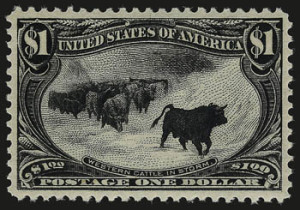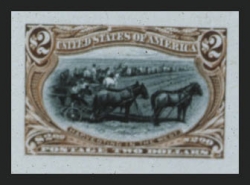The 1898 Trans Mississippi appeared to be a commemorative set issued to honor America's expansion into the west. But its issuance served another purpose. It was hard to see at first why the 1898 Trans Mississippi set was made. The 1893 Columbian Exposition issue was widely criticized as being redundant in design and appearance and having too many high values, and it had been scorned by collectors. By 1898, higher dollar values of the Columbians were selling only fractionally above their face value, and this was only because the stamps could be used on controlled mail, and, when soaked off by the recipients, the used stamps could be sold to collectors for a significant percentage of the mint price, thus giving these higher values a sort of double duty. Without this, it is unlikely that defective dollar value Columbians would have sold above face value for as long as fifteen years after they were issued. So by 1898, it was clear that stamp collectors certainly weren't clamoring for another long commemorative set.
For years philatelic researchers have felt that the 1898 Trans Mississippi set was a stamp issue in search of a purpose. The Columbian issue had been to commemorate the five hundredth anniversary of Columbus's discovery of the New World. Values to the five dollar were issued, surely unnecessary for postal purposes, but at least there was a commemorative purpose of note. In the five years between the issuance of the Columbians and the Trans Mississppis, the United States Post Office changed printers for postage stamps, for the last time. Up until 1894, contracts for printing stamps were bid by private companies, though the bidding was largely a formality (as the requirements in the bid proposal meant that only a very few of the largest security printers could compete).
In 1894, the Bureau of Engraving and Printing (BEP), a US government agency, received the contract to print US postage stamps and has done virtually all of the United States stamp printing since then. The first stamp issue produced by the BEP was the 1895 definitive issue to the $5 value which was reissued the next year on watermarked paper, creating, between the two issues, over thirty different stamps that collectors needed. Certainly there was no need for additionally issued sets of stamps with higher values in 1898. Collectors were sated with high values, having been forced fed on the Columbians and the regular issues (in two years, over $36 in postage value of stamps were issued for collectors to digest


